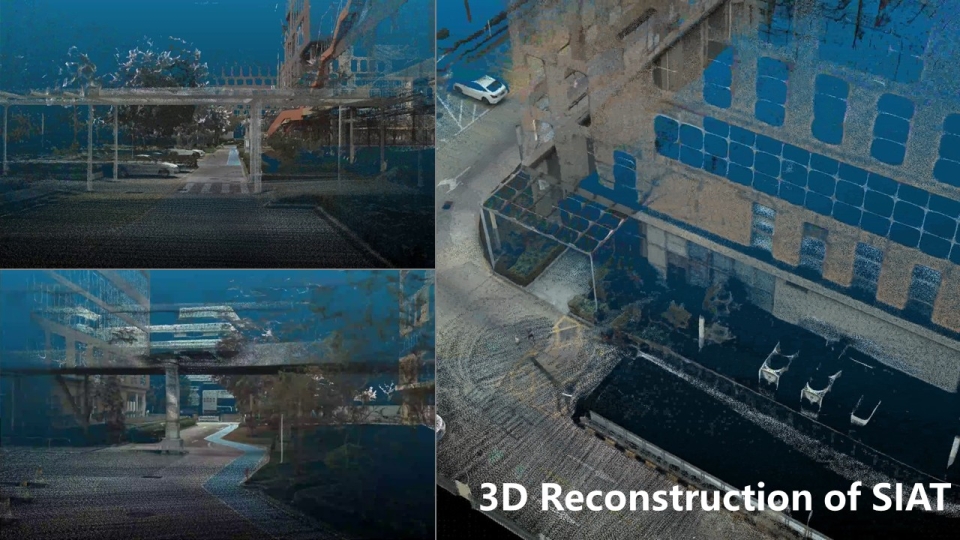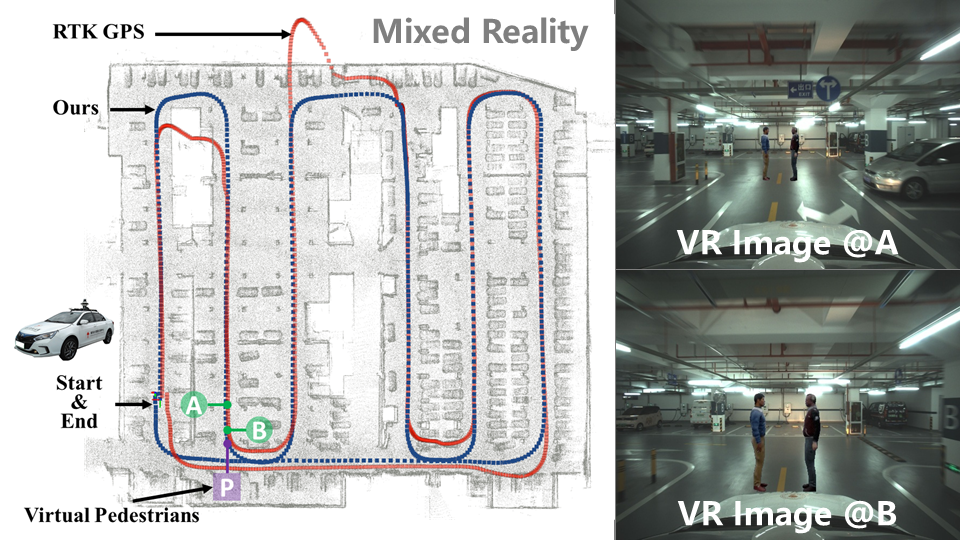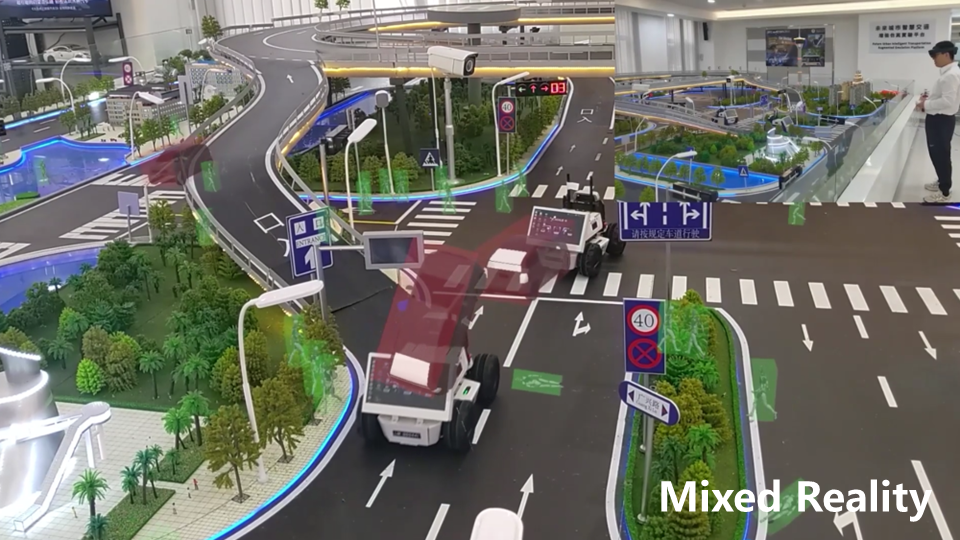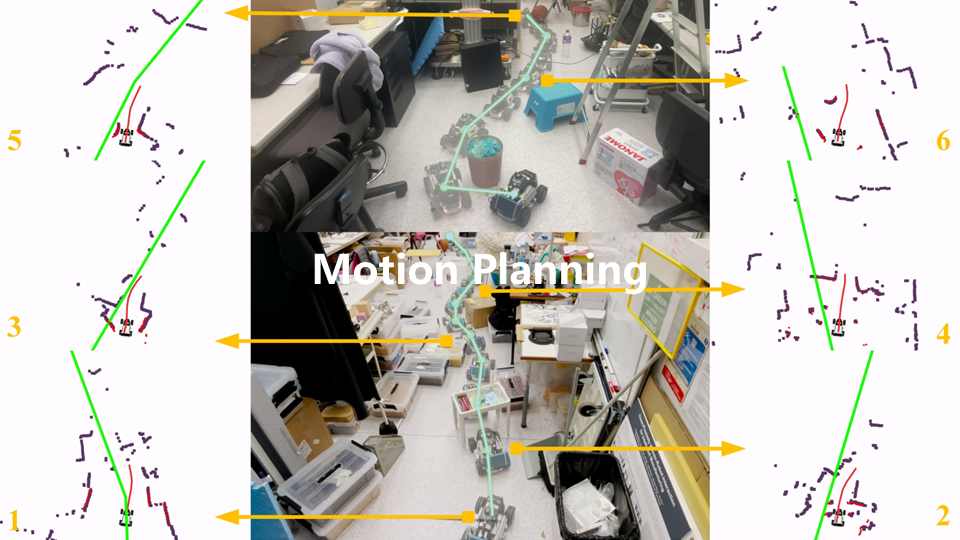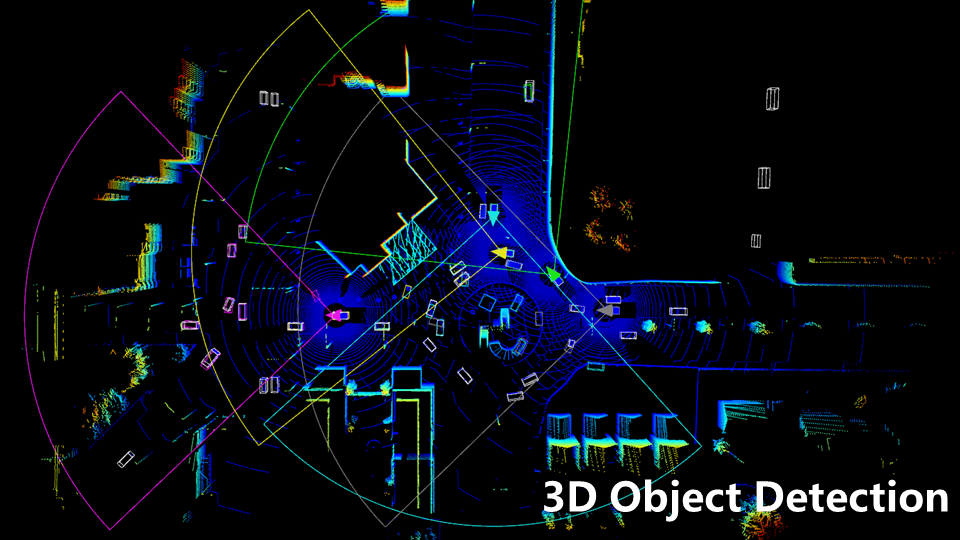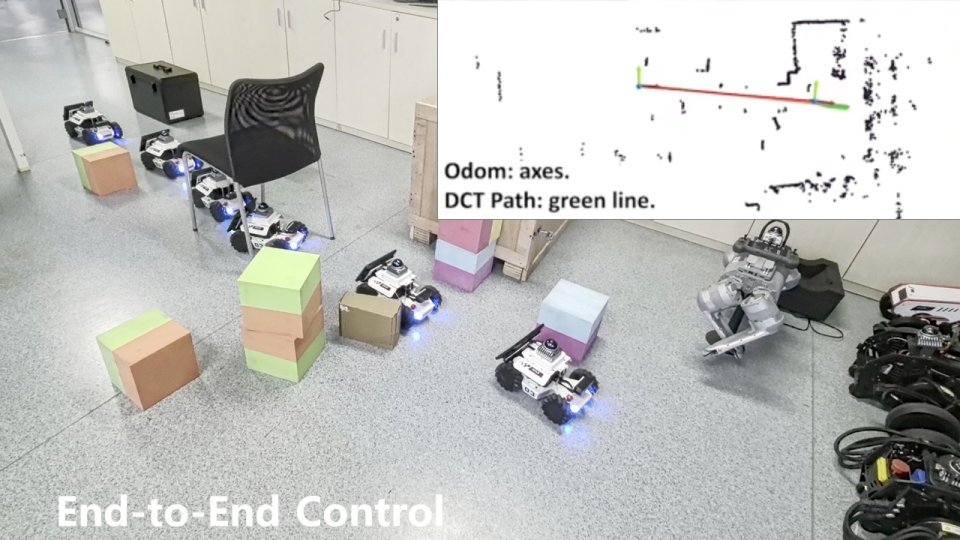About us
Welcome to the Intelligent Networked Vehicle Systems (INVS) Laboratory. We are part of the Cloud Computing Center at Shenzhen Institutes of Advanced Technology (SIAT), Chinese Academy of Sciences (CAS). Our lab focuses on general autonomous navigation of mobile robotics, with an emphasis on leveraging high-dimensional optimization and high-fidelity simulation to enhance their efficiency and robustness, so as to push the limit of their practical use in real human life. Our current focuses are on end-to-end model-based learning, planning and control, and extended reality.
We are hiring new MPhil and Ph.D. students on lidar slam, planning, simulation, optimization, and reinforcement learning. Potential students can contact Dr. Wang at for the positions.
Project Highlights
NeuPAN: Direct Point Robot Navigation with End-to-End Model-based Learning 【T-RO'25】
We present NeuPAN, an end-to-end model-based learning framework that directly maps raw points to a distance-oriented latent space that is used as neural regularizers to compute physically bounded robot actions. NeuPAN can avoid error propagation from perception to control or lack of generalization in existing solutions. NeuPAN is a real-time (20Hz), highly accurate (dm-level), map-free (suitable for exploration), robot-agnostic (direct deployment on new robots), and environment invariant (i.e., no retraining across different scenarios) robot navigation system. Experiments demonstrate that NeuPAN outperforms various benchmarks, in terms of accuracy, efficiency, robustness, and generalization capability across various environments, including the cluttered sandbox, office, corridor, and parking lot. NeuPAN works well in unstructured environments with arbitrary-shape undetectable objects, making impassable ways passable.
Authors: Ruihua Han, Shuai Wang, Shuaijun Wang, Zeqing Zhang, Jianjun Chen, Shijie Lin, Chengyang Li, Chengzhong Xu, Yonina C Eldar, Qi Hao, Jia Pan
Paper: Free access here Code: Code ROS: Code
Edge Accelerated Robot Navigation with Collaborative Motion Planning 【T-MECH'25】
We present EARN, which navigates low-cost robots in real time via collaborative motion planning. In contrast to existing local or edge motion planning solutions that ignore the inter-dependency between low-level motion planning and high-level resource allocation, EARN adopts model predictive switching (MPS) that maximizes the expected switching gain w.r.t. robot states and actions under computation and communication resource constraints. As such, each robot can dynamically switch between a point-based motion planner executed locally to guarantee safety (e.g., path-following) and a shape-based motion planner executed non-locally to guarantee efficiency (e.g., overtaking). We validate the performance of EARN in indoor simulation, outdoor simulation, and real-world environments. Experiments show that EARN achieves significantly smaller navigation time and collision ratios than state-of-the-art navigation approaches.
Authors: Guoliang Li, Ruihua Han, Shuai Wang, Fei Gao, Yonina Eldar, Chengzhong Xu
Paper: Free access here Code: Code
Communication Efficient Robotic Mixed Reality with Gaussian Splatting Cross-Layer Optimization 【T-CCN'25】
Mixed Reality (MR) allows real robots to interact with virtual objects, enabling dangerous or complex scenario generation. However, seamless synchronization between robot and server requires transmission of high-resolution images, which leads to high communication overheads. Existing literature lacks memory utilization and cross-layer optimization. This paper proposes Gaussian Splatting Mixed Reality (GSMR), which renders images from the robot pose by calling “memory” from a GS model, thus reducing image amounts. Cross-layer optimization (CLO) is developed to jointly optimize content switching (i.e., deciding whether to upload image or not) and power allocation (i.e., adjusting to content profiles) across different frames. Extensive experiments demonstrate that the proposed GSMR paradigm and GSCLO method achieve significant improvements over existing benchmarks on both wheeled and legged robots in various scenarios. It is found that RoboMR can be achieved with ultra-low communication costs, and mixture of data is useful for enhancing GS performance in dynamic scenarios.
Authors: Chenxuan Liu, He Li, Zongze Li, Shuai Wang, Wei Xu, Kejiang Ye, Derrick Wing Kwan Ng, Chengzhong Xu
Paper: Free access here
Federated Deep Learning Meets Autonomous Vehicle Perception: Design and Verification 【IEEE NETWORK'23】
Realizing human-like perception is a challenge in open driving scenarios due to corner cases and visual occlusions. To gather knowledge of rare and occluded instances, federated learning assisted connected autonomous vehicle (FLCAV) has been proposed, which leverages vehicular networks to establish federated deep neural networks (DNNs) from distributed data captured by vehicles and road sensors. Without the need of data aggregation, FLCAV preserves privacy while reducing communication costs compared with conventional centralized learning. However, it is challenging to determine the network resources and road sensor placements for multi-stage training with multi-modal datasets in multi-variant scenarios. This article presents networking and training frameworks for FLCAV perception. Multi-layer graph resource allocation and vehicle-road contrastive sensor placement are proposed to address the network management and sensor deployment problems, respectively. We also develop CarlaFLCAV, a software platform that implements the above system and methods. Experimental results confirm the superiority of the proposed techniques compared with various benchmarks.
Authors: Shuai Wang, Chengyang Li, Derrick Wing Kwan Ng, Yonina C Eldar, H Vincent Poor, Qi Hao, Chengzhong Xu
Paper: Free access here Code1: Code Code2: Code
Enhancing Large Vision Model in Street Scene Semantic Understanding through Leveraging Posterior Optimization Trajectory 【IROS'25】
We propose to use a pretrained Large Vision Models (LVMs) as backbone coupled with downstream perception head to understand autonomous driving (AD) semantic information. To mitigate vehicles’ computational burden of training the perception head while running LVM backbone, we introduce a Posterior Optimization Trajectory (POT)-Guided optimization scheme (POTGui) to accelerate the convergence, through which the model can generally converge within 10 epochs. Extensive experiments demonstrate that the proposed method improves the performance by over 66.48% and converges faster over 6 times, compared to the existing state-of-the-art approaches.
Authors: Wei-Bin Kou, Qingfeng Lin, Ming Tang, Jingreng Lei, Shuai Wang, Rongguang Ye, Guangxu Zhu, Yik-Chung Wu
Paper: Free access here
Opportunistic Collaborative Planning with Large Vision Model Guided Control and Joint Query-Service Optimization 【IROS'25】
This paper proposes opportunistic collaborative planning (OCP), which seamlessly integrates efficient local models with powerful cloud models through two key innovations. First, we propose large vision model guided model predictive control (LVM-MPC), which leverages the cloud for LVM perception and decision making. The cloud output serves as a global guidance for a local MPC, thereby forming a closed-loop perception-to-control system. Second, to determine the best timing for large model query and service, we propose collaboration timing optimization (CTO), including object detection confidence thresholding (ODCT) and cloud forward simulation (CFS), to decide when to seek cloud assistance and when to offer cloud service. Extensive experiments show that the proposed OCP outperforms existing methods in terms of both navigation time and success rate.
Authors: Jiayi Chen, Shuai Wang, Guoliang Li, Wei Xu, Guangxu Zhu, Derrick Wing Kwan Ng, Chengzhong Xu
Paper: Free access here
FedEMA: Federated Exponential Moving Averaging with Negative Entropy Regularizer in Autonomous Driving 【IROS'25】
This paper proposes Federated Exponential Moving Average (FedEMA), a novel framework that provides two innovations: (I) Server-side model’s historical fitting capability preservation via fusing current FL round’s aggregation model and a proposed previous FL round’s exponential moving average (EMA) model; (II) Vehicle-side negative entropy regularization to prevent FL models’ possible overfitting to EMA-introduced temporal patterns. Above two strategies empower FedEMA a dual-objective optimization that balances model generalization and adaptability. In addition, we conduct theoretical convergence analysis for the proposed FedEMA. Extensive experiments both on Cityscapes dataset and Camvid dataset demonstrate FedEMA’s superiority over existing approaches, showing 7.12% higher mean Intersection-over-Union (mIoU).
Authors: Wei-Bin Kou, Guangxu Zhu, Bingyang Cheng, Shuai Wang, Ming Tang, Yik-Chung Wu
Paper: Free access here
Clutter Resilient Occlusion Avoidance for Tightly-Coupled Motion-Assisted Detection 【ICASSP'25】
This paper proposes a motion-assisted detection (MAD) method that actively plans an executable path, for the robot to observe the target at a new viewpoint with potentially reduced occlusion. In contrast to existing MAD approaches that may fail in cluttered environments, the proposed framework is robust in such scenarios, therefore termed clutter resilient occlusion avoidance (CROA). The CROA system minimizes the occlusion probability under polyhedron-based collision avoidance constraints via the convex-concave procedure and duality-based bilevel optimization. Experiments show that CROA outperforms various MAD schemes under a sparse convolutional neural network detector, in terms of point density, occlusion ratio, and detection error, in a multi-lane urban driving scenario.
Authors: Zhixuan Xie, Jianjun Chen, Guoliang Li, Shuai Wang, Kejiang Ye, Yonina C Eldar, Chengzhong Xu
Paper: Free access here
Label Anything: An Interpretable, High-Fidelity and Prompt-Free Annotator 【ICRA'25】
This paper proposes a Label Anything Model (denoted as LAM), serving as an interpretable, high-fidelity, and prompt-free data annotator, to mitigate the cost of manual labeling. The LAM incorporate a pretrained Vision Transformer (ViT) to extract the latent features. Then it adopts a semantic class adapter (SCA) to fuse ViT-extracted features and an optimization-oriented unrolling algorithm (OptOU) to align its output with the ground truth. The SCA and OptOU are interpretable, and easy to train. Extensive experiments clearly demonstrate that the proposed LAM can generate high-fidelity annotations (almost 100% in mIoU) for multiple real-world datasets (i.e., Camvid, Cityscapes, and Apolloscapes) and CARLA simulation dataset.
Authors: Wei-Bin Kou, Guangxu Zhu, Rongguang Ye, Shuai Wang, Ming Tang, Yik-Chung Wu
Seamless Virtual Reality with Integrated Synchronizer and Synthesizer for Autonomous Driving【RA-L'24 & IROS'24】
We present a seamless virtual reality (SVR) platform for autonomous driving, which enables virtual and real agents to interact with each other in a shared symbiotic world. SVR can mitigate VR inconsistency and degraded fidelity in existing driving simulators. The crux of SVR is an integrated synchronizer and synthesizer (IS2) design, which consists of a drift-aware lidar-inertial synchronizer for VR colocation and a motion-aware deep visual synthesis network for VR image generation. We implement SVR on car-like robots in two sandbox platforms, achieving a cm-level VR colocalization accuracy and 3.2% VR image deviation. Experiments show that the proposed SVR reduces the intervention times, missed turns, and failure rates compared to other benchmarks. The SVR-trained neural network can handle unseen situations in real-world environments, by leveraging its knowledge learned from the VR space.
Authors: He Li, Ruihua Han, Zirui Zhao, Wei Xu, Qi Hao, Shuai Wang, Chengzhong Xu
Paper: Free access here
Robotic Sensor Network: Achieving Mutual Communication Control Assistance With Fast Cross-Layer Optimization【WCL'24】
We present radio map guided model predictive communication (MPCOM), which navigates the robot with both grid and radio maps for shape-aware collision avoidance and communication-aware trajectory generation in a dynamic environment. In contrast to existing motion planning methods that plan robot trajectories merely according to motion factors, MPCOM maximizes the robotic data gathering efficiency. The proposed MPCOM is able to trade off the time spent on reaching goal, avoiding collision, and improving communication, as it captures high-order signal propagation characteristics using radio maps and incorporates the map guided communication regularizer to the MPCOM framework. Experiments show that the proposed MPCOM outperforms other benchmarks in both LOS and NLOS cases.
Authors: Zhiyou Ji, Guoliang Li, Ruihua Han, Shuai Wang, Bing Bai, Wei Xu, Kejiang Ye, Chengzhong Xu
Paper: Free access here
FedRC: A Rapid-Converged Hierarchical Federated Learning Framework in Street Scene Semantic Understanding 【IROS'24】
We present FedRC, a rapid-converged hierarchical federated learning (HFL) framework for street scene semantic understanding. FedRC tackles the inter-city data heterogeneity by differentiating different images using statistical properties, thereby accelerating the convergence of HFL. Extensive experiments on across-city datasets demonstrate that FedRC converges faster than state-of-the-art methods by 38.7%, 37.5%, 35.5%, and 40.6% in terms of mIoU, mPrecision, mRecall, and mF1, respectively. Furthermore, qualitative evaluations in the CARLA simulation environment confirm that the proposed FedRC framework delivers satisfactory performance.
Authors: Wei-Bin Kou, Qingfeng Lin, Ming Tang, Shuai Wang, Guangxu Zhu, Yik-Chung Wu
Paper: Free access here
Multi-Uncertainty Aware Autonomous Cooperative Planning 【IROS'24】
Autonomous cooperative planning (ACP) is a promising technique to improve the efficiency and safety of multi-vehicle interactions for future intelligent transportation
systems. However, realizing robust ACP is a challenge due to the aggregation of perception, motion, and communication uncertainties. This paper proposes a novel multi-uncertainty aware ACP (MUACP) framework that simultaneously accounts for multiple types of uncertainties via regularized cooperative model predictive control (RC-MPC). The regularizers and constraints for perception, motion, and communication are constructed according to the confidence levels, weather conditions, and outage probabilities, respectively. The effectiveness of the proposed method is evaluated in the Car Learning to Act (CARLA) simulation platform. Results demonstrate that the proposed MUACP efficiently performs cooperative formation in real time and outperforms other benchmark approaches in various scenarios under imperfect knowledge of the environment.
Authors: Shiyao Zhang, He Li, Shengyu Zhang, Shuai Wang, Derrick Wing Kwan Ng, Chengzhong Xu
Paper: Free access here
RDA: An Accelerated Collision-free Motion Planner for Autonomous Navigation in Cluttered Environments 【RA-L'23】
We present an accelerated collision-free motion planner, i.e., regularized dual alternating direction method of multipliers (RDADMM or RDA for short), for the collision avoidance motion planning problem. In contrast to existing shape-ignored collision avoidance that is prone to stuck or shape-aware collision avoidance that has a low frequency, the proposed RDA is both fast and shape-aware. This is realized by solving a smooth biconvex reformulation via duality and computing collision-free trajectories in parallel for each obstacle to reduce computation time significantly. Experimental results show that the proposed method generates smooth collision-free trajectories with less computation time compared with other benchmarks and performs robustly in cluttered environments.
Authors: Ruihua Han, Shuai Wang, Shuaijun Wang, Zeqing Zhang, Qianru Zhang, Yonina Eldar, Qi Hao, Jia Pan
Paper: Free access here Code: Code ROS: Code
Communication Resources Constrained Hierarchical Federated Learning for End-to-End Autonomous Driving 【T-ITS'25 & IROS'23】
We present the Communication Resource Constrained Hierarchical Federated Learning (CRCHFL) framework to minimize the generalization error of the autonomous driving model using hybrid data and model aggregation. CRCHFL can overcome the slow convergence due to long-range communications among vehicles and cloud servers. CRCHFL achieves the orchestration between constrained communication resources and its effectiveness is evaluated in the Car Learning to Act (CARLA) simulation platform. Results show that the proposed CRCHFL both accelerates the convergence rate and enhances the generalization of the federated learning autonomous driving model. Moreover, under the same communication resource budget, it outperforms the HFL by 10.33% and the SFL by 12.44%.
Authors: Wei-Bin Kou, Shuai Wang, Guangxu Zhu, Bin Luo, Yingxian Chen, Derrick Wing Kwan Ng, Yik-Chung Wu
Paper: Free access here Code: Code
Distributed Dynamic Map Fusion via Federated Learning for Intelligent Networked Vehicles 【ICRA'21】
We present a federated learning-assisted dynamic map fusion framework, CarlaINVS, which enables object-level fusion and distributed online learning to achieve high map quality and low communication overhead. CarlaINVS consists of 1) a three-stage map fusion based on the DBSCAN-based clustering, score-based weighted-sum, and IoU-based box-pruning methods; 2) a point-cloud federated learning algorithm, which fine-tunes feature models of objects distributively by aggregating model parameters; 3) a knowledge distillation method to transfer the knowledge from the roadside units to individual vehicles. CarlaINVS is implemented in CARLA and compared with extensive benchmark schemes.
Authors: Zijian Zhang, Shuai Wang, Yuncong Hong, Liangkai Zhou, Qi Hao
Paper: Free access here Code: Code

